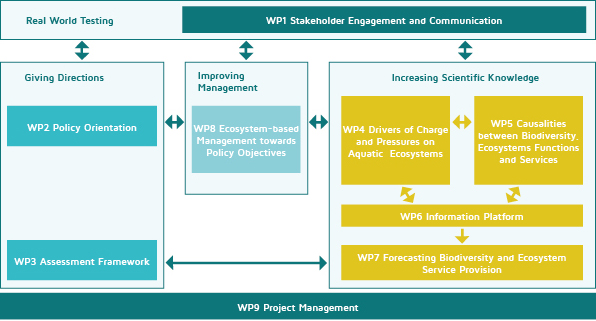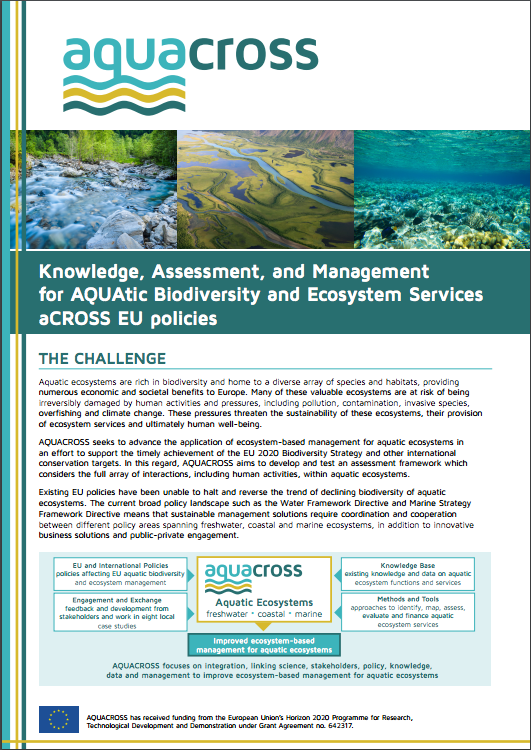The Challenge
Aquatic ecosystems are rich in biodiversity and home to a diverse array of species and habitats, providing numerous economic and societal benefits to Europe. Many of these valuable ecosystems are at risk of being irreversibly damaged by human activities and pressures, including pollution, contamination, invasive species, overfishing and climate change. These pressures threaten the sustainability of these ecosystems, their provision of ecosystem services and ultimately human well-being.
AQUACROSS seeks to advance the application of ecosystem-based management for aquatic ecosystems in an effort to support the timely achievement of the EU 2020 Biodiversity Strategy and other international conservation targets. In this regard, AQUACROSS aims to develop and test an assessment framework which considers the full array of interactions, including human activities, within aquatic ecosystems.
Existing EU policies have been unable to halt and reverse the trend of declining biodiversity of aquatic ecosystems. The current broad policy landscape such as the Water Framework Directive and Marine Strategy Framework Directive means that sustainable management solutions require coordination and cooperation between different policy areas spanning freshwater, coastal and marine ecosystems, in addition to innovative business solutions and public-private engagement.
Work Packages
The work in AQUACROSS under the following topics is applied to the eight case studies. This application serves to achieve a better understanding of end-user needs, utilising this practical experience to determine best practices and lessons learned.

The Approach
The AQUACROSS approach is built around four pillars of work developed in collaboration with eight local case studies.
Pillar 1: Real world testing — ensures stakeholder engagement, knowledge exchange and social learning to achieve practical policy solutions and end-user uptake. Representatives from science, policy, business and AQUACROSS case studies will help steer project activities and validate results.
Pillar 2: Giving direction — considers existing political processes and legislation to identify synergies and barriers to aquatic ecosystem management. AQUACROSS develops an Assessment Framework to assess aquatic ecosystems in line with integrated management, and including concepts of resilience and uncertainty.
Pillar 3: Increasing scientific knowledge — seeks to identify and assess drivers and pressures of aquatic ecosystems; understand causalities between biodiversity, ecosystem functions and services; ensure exchange of data, information and research results through an information platform; and forecast biodiversity and ecosystem service provision.
Pillar 4: Improving management— builds on work undertaken in the previous pillars to develop concepts, practices and tools for better implementation of EBM. This includes identifying and understanding the linkages between aquatic ecosystems and human well-being and identifying innovative management responses for aquatic ecosystems.
Case studies — are a major source of information and data and ensure interaction across aquatic ecosystems as well as disciplines. Case study stakeholders help co-create concepts and develop products, share experiences with implementing policy and respective management approaches, as well as provide critical feedback on project outputs.
The AQUACROSS project runs from June 2015 to November 2018 and is coordinated by Dr. Manuel Lago.


